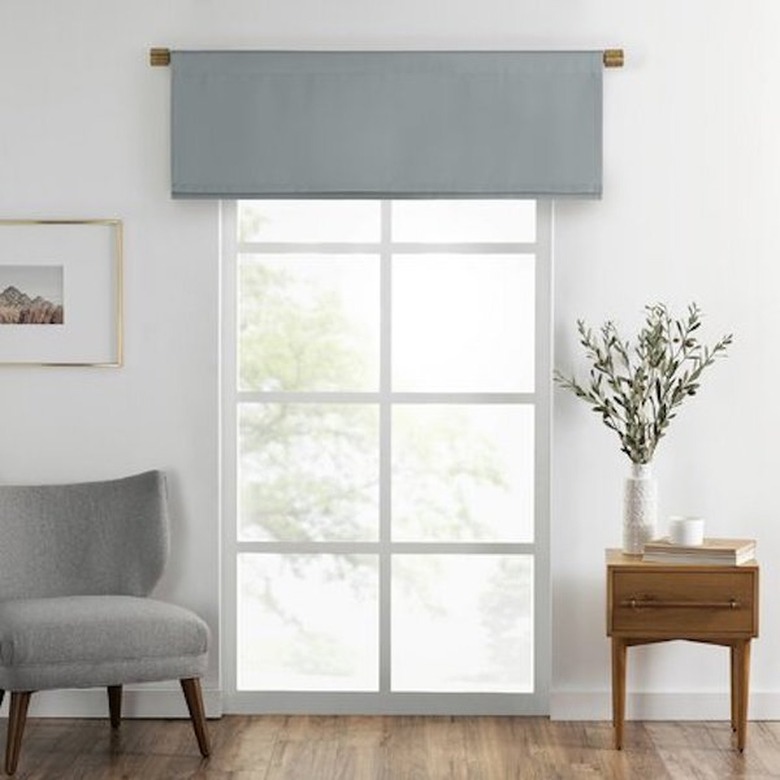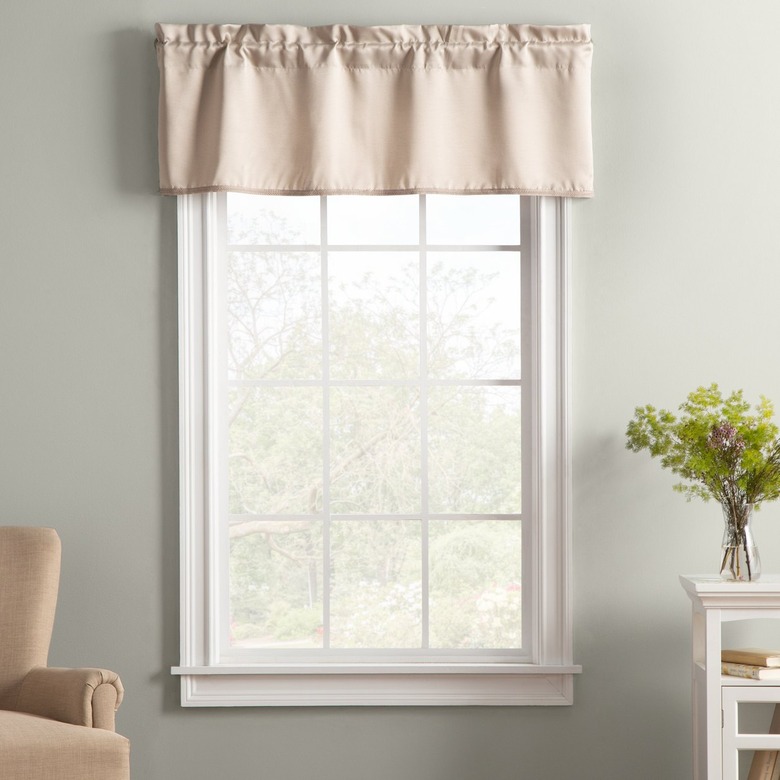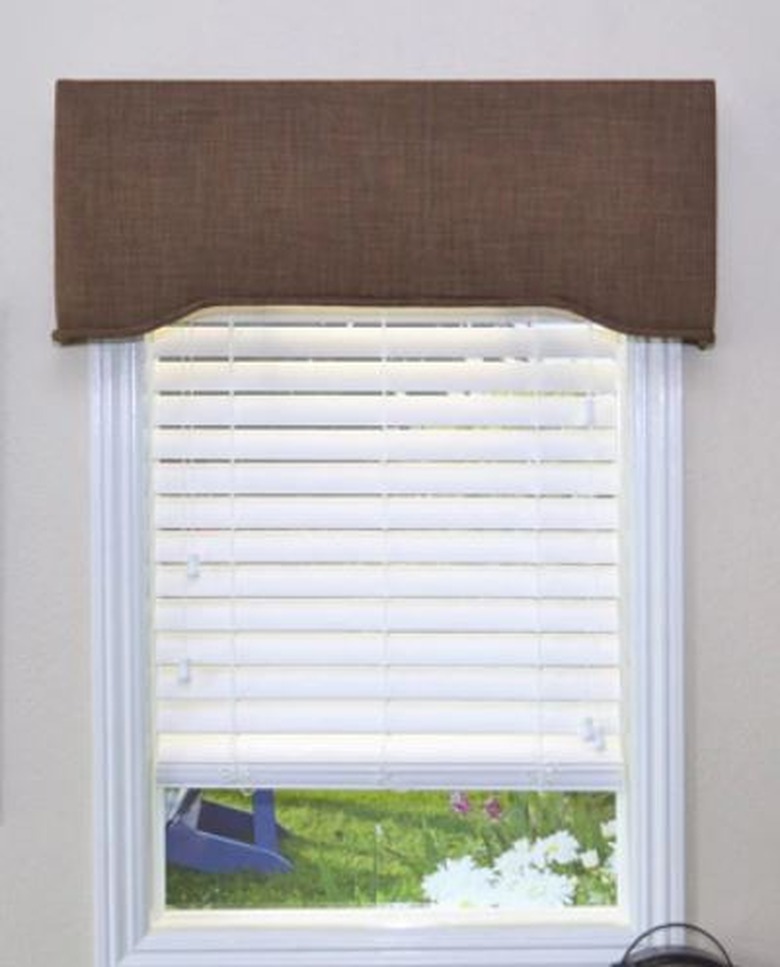What Is A Valance? Here's What You Should Know About This Forgotten Window Treatment
There are lots of window treatments to choose from — and it's safe to say that most have forgotten about the humble valance. A window valance is a decorative element used to add color, texture, and pattern to the top of a plain window. Valances are often made from fabric, so someone with even basic sewing skills can easily make a window valance and customize the look.
Fabric stores offer a huge selection of materials in colors, prints, and patterns that are on trend. Otherwise, home stores and big-box retailers offer affordable valances that can be easily changed each season for a fresh look. If fabric isn't your thing, you can also get decorative valances made of wood, metal, and other materials.
Aren't interested in heavy drapes or shades? A valance may be just the right choice of window covering for your living room or bedroom.
Tip
A window valance is a piece of wood, fabric, or metal that hangs across the top of a window. You can use one to layer your drapery or to decorate a window in a room where less is more.
Do I Need a Valance?
Technically, no one needs a valance, but these window treatments do have many uses. One is for decoration. An attractive valance can add the finishing touch to your drapes, particularly if you layer them. Many people prefer to put the valance on top of the other curtains when layering, but you can also put them on the bottom.
A valance alone can soften a window where you don't want heavy draperies or blinds. This may prove especially helpful in rooms where kids and pets sometimes spend unsupervised time. A valance doesn't hang down to the floor, so you don't need to worry about anyone pulling on the drapes or getting wrapped in blind cords.
You can also use a valance to cover unsightly window shade hardware or plain curtain rods used to hang curtain panels. Additionally, valances can visually connect long curtain panels that are separated by a large expanse of windows. Valances can add height to a room, but homeowners often lose this benefit by installing the valance too low. You can also use a valance to add a pop of color where you need it without overwhelming the room or the view from the window.
Types of Valances
Typically, a valance is made from fabric and is hung from a curtain rod. The fabric can be gathered, pleated, or draped into swags, usually adding a softer look to a room. An ascot valance, for example, is intended for use over a drape and adds drama to your window treatments. Many feature tassels, beads, fringe, or other decorative elements on the bottom.
Balloon valances hang from the curtain rod and then puff out as they work their way down the window, adding fullness and depth to the treatment. Some homeowners and designers prefer scarf valances. Made from a single piece of fabric, these valances drape over the curtain rod, creating a graceful curve in the middle and then hanging down the sides of the window. Scarf valances are the easiest to install.
Swag valances provide another option. A swag looks similar to a scarf valance, featuring one or more dips that hang below the curtain rod. Some swags also add jabots. A jabot is a piece of fabric that hangs on either side of the window. It is folded in vertical waves to create an attractive pattern as it frames the window.
These valances are all made of fabric, but you can also construct a valance from other materials, such as wood or even corrugated metal. However, these structured window treatments are typically referred to as cornices rather than valances. If a cornice is upholstered with fabric or leather, the underlying base is called a cornice board. You don't have to cover the cornice board with fabric, however. You can stain it, paint it, or otherwise decorate it to your liking. Constructing a cornice is a popular DIY project among people who want to create a custom look.
Installing a Valance
You have several options when it comes to hanging your valance, and the one you choose ultimately depends on your taste. One option is to do an inside mount on your window. When choosing this option, you'll mount the valance on a curtain rod inside the window frame. This method provides the clean look of a Roman shade and is an excellent choice if you're making the valance the first part of a layered window treatment with other drapes.
An outside mount is also an option. As the name suggests, outside means mounting the valance outside the window frame. In this instance, you'll ideally opt for a valance wide enough to extend about 3 to 4 inches past the window frame on each side. You can install the valance alone or hang it outside your drapes. In this case, you'll create a layered look with the valance as the outside layer rather than the inside one.
When doing an outside mount on your valance, don't overlook the chance to make your window look taller and your ceilings look higher. If you hang your valance just at the top of your window frame, it will block part of the window and may make it look smaller. Ideally, a valance mounts high enough to frame your window without blocking it.
If you have 8-foot ceilings and crown molding, the perfect mounting option is to mount the valance just below the molding. Otherwise, mount the valance a few inches above the window frame. A valance should only cover the top third of the window, leaving plenty of space for enjoying the view.
Common Valance Mistakes
When choosing a valance, there are a few pitfalls you'll want to avoid. One is choosing the wrong material. If you want a fabric valance, try to choose one that's machine washable so you can easily keep it clean. When opting for more of a cornice, go for a smooth finish that can be cleaned with a dust rag. Remember to steam or iron your fabric valances when hanging them for the first time and after washing them so you aren't left with an unsightly wrinkled look.
Your valance may provide the finishing touch to your room or window treatments, but it shouldn't be an afterthought. Consider your windows as part of the whole when redesigning a room. It's much easier to plan the room in its entirety than it is to try finding the exact right color of valance after the fact.
Although admittedly not the most exciting part of your new window treatment, make sure you don't overlook the curtain rod. Choose a rod that's sturdy enough to support your valance without sagging in the middle. Different types and sizes of curtain rods can greatly change the look of your window and may make your valance hang differently than you would like.
Perhaps the biggest mistake people make is overlooking valances altogether. Window valances were especially popular during the 1980s and then somehow got branded as fussy and formal. It's true that a red velvet valance in a scallop design may look a little stiff, but there are plenty of modern fabrics and designs from which to choose. A small amount of material can go a long way in adding drama or beautifully framing a window while providing a pop of color.


